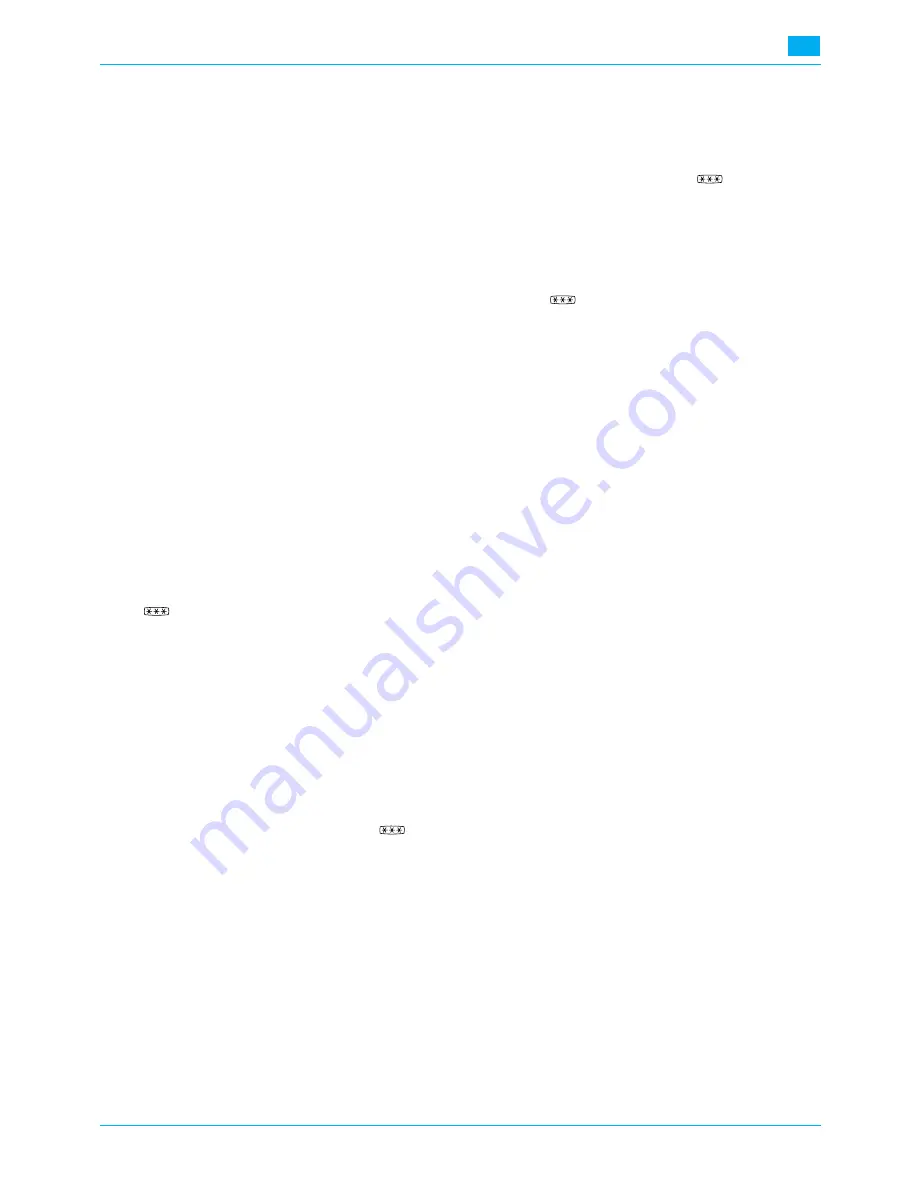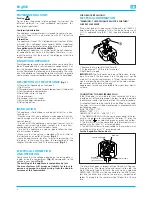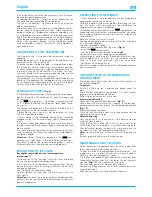
English
5
GB
If the plug and the wall socket do not comply, have the socket
replaced by a qualified electrician.
He should also check that the section of the socket wires can
withstand the power absorbed by the appliance.
The use of the adapters, multipole sockets and extension
cords is not advisable.
If absolutely necessary, use simple or multiple adapters and ex-
tension cords in compliance with local safety regulations
paying attention not to exceed the maximum amperage, whi-
ch is marked on the simple adaptors and on extension cords
and that of the total power marked on the multiple adapters.
When the appliance is plugged in, the interior light should co-
me on when the door is opened. Turn the thermostat control
knob as indicated in chapter "Thermostat". The refrigerator is
now ready for use.
ADJUSTMENT OF THE TEMPERATURE
The thermostat (Fig. 1/A) controls the temperature inside the
appliance.
Position
●
indicates that the operation of the appliance is in-
terrupted and the interior light is off.
To obtain the best storage of foods, we suggest you adjust
the thermostat control knob to an intermediate position.
To obtain colder temperatures inside the appliances, turn the
thermostat control knob towards the higher settings.
Contrarily, should the inside temperature be too cold, turn the
thermostat control knob towards settings 2-1.
We remind you that internal temperatures are affected by the
location of the appliance, the temperature of the surrounding
air, the frequency of door opening. The setting of the thermo-
stat may have to be varied to allow for these factors.
STORAGE OF FOODS
(Fig. 6)
In the refrigerator compartment the temperature varies depen-
dent on the section. The coldest one is near the crispers and
the rear wall.
In the
compartment, if provided, a temperature of
-18°C is reached, allowing the storage of frozen foods for so-
me months.
The storage time depends on the nature of the foods and is
generally given on the frozen foods packets.
If foods start to thaw, they must not be refrozen, but used
within the least possible delay.
All items stored in the refrigerator compartment should be
wrapped in cling film, aluminium foil or kept in a covered con-
tainer.
This prevents foods from becoming dry on the surface and al-
so stops strong smells and flavours being transferred from one
food to another.
The space inside the appliance can be organised to suit your
needs by moving the shelves. We suggest you store foods as
illustrated in
Fig. 6.
Attention:
Do not store glass containers in the
com-
partment nor warm foods in the refrigerator compartment.
Fizzy drinks should not be frozen and some products, such as
flavoured water ices, should not be consumed too cold.
PRODUCTION OF ICE CUBES
(for appliances provided with a low temperature
compartment)
Three-quarters fill the ice cube trays with water and place
them in the low temperature compartment.
If the trays stick to the bottom of the compartment, do not
detach them with sharp or cutting instruments which could
damage the appliance.
Use, if required, the handle of a spoon.
To allow removal of cubes from the plastic trays, twist the
trays slightly.
Attention:
Do not eat ice cubes or ice lollies immediately after
removal from the low temperature compartment as they may
give rise to cold burns.
DEFROSTING THE APPLIANCE
- If your appliance is not provided with the low temperature
compartment, defrosting is automatic.
During the defrost cycle water droplets drip along the rear
wall, the water is then conveyed to a tray situated on the
compressor casing where it evaporates.
- If your appliance is provided with the
compartment, to
keep energy consumption low, we recommend that you perio-
dically remove excessive ice and frost from the inside of the
compartment.
Never use sharp or cutting instruments.
We suggest you defrost when the layer of frost has attained a
3 mm thickness
(Fig. 7)
.
To defrost, proceed as follows:
- disconnect the appliance from the mains
(Fig. 8)
;
- empty the
compartment;
- turn the thermostat control knob to position
●
;
- dry defrost water with a sponge or a cloth
(Fig. 9)
.
At completion of defrosting, dry the compartment walls, con-
nect the appliance to the mains, turn the thermostat control
knob to the position required, referring to chapter
"Adjustment of the temperature".
Also for this model, the defrosting of the refrigerator compart-
ment is automatic.
APPLIANCE WITH LOW TEMPERATURE
COMPARTMENT
We suggest you defrost when the layer of frost reaches a 3
mm thickness
(Fig. 7)
.
To defrost:
Ensure that the drip tray is emptied and placed under the
drain.
Empty the low temperature compartment. It is not necessary
to empty the refrigerator compartment.
Defrosting can be carried out in two ways:
Accelerated defrosting
Disconnect the appliance from the mains
(Fig. 8)
.
Place a bowl with warm water (50°C approx.) in the low tem-
perature compartment and leave the refrigerator door open
(Fig. 10)
.
If required, change the water.
When the frost has melted, clean the inside and reconnect the
appliance to the mains supply.
Normal defrosting
Press the button (8) in the centre of the thermostat control
knob and close the door.
When the frost has melted, the switch will return to its origi-
nal position and the refrigerator will automatically operate.
After defrosting, remove the bowl with water and place the
ice cubes tray in the low temperature compartment.
Note:
Do not use sharp or cutting instruments to remove the
frost.
Do not use electric heaters or other heat sources.
MAINTENANCE AND CLEANING
Always disconnect the appliance from the mains supply, prior
to any cleaning or maintenance operation.
To clean the inside of the appliance and the accessories, we
suggest you use a solution of lukewarm water and vinegar.
Never use abrasives, detergents or soaps.
The shelves are hooked at both sides of the inner door liner.
Periodically clean the water tray, situated on the rear compart-
ment wall
(Fig. 11)
. Use a pencil or a similar tool.
Clean the door gasket with water and dry carefully.
Avoid soiling the door gasket with oil or any other grease whi-
ch could damage it.
After cleaning, reconnect the appliance to the mains.





















